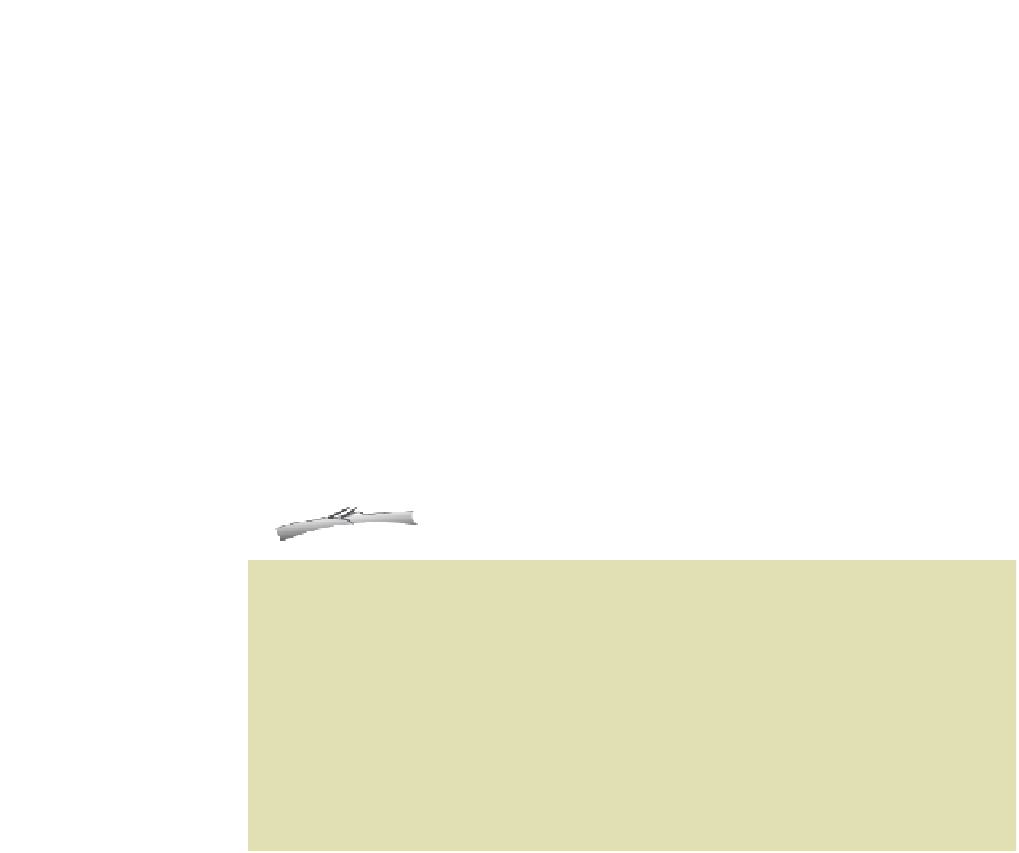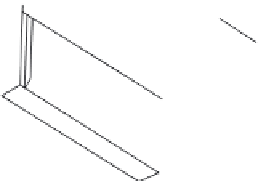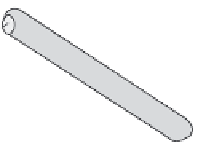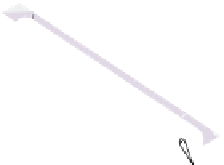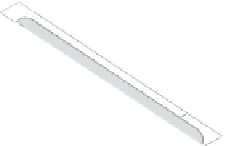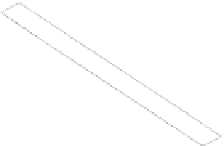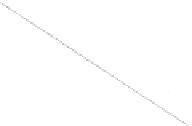Biology Reference
In-Depth Information
(b)
100
Predicted result
(a)
80
Observed result for
bird “RO”
Adjustable
cover
Roosting
Box
60
40
Perspex
Conveyor
Belt
20
0
0.2
-0.1
0
0.1
0.2
0.3
0.4
0.8
Extra payoff for specialising (prey/sec)
on large worms compared with eating
both unselectively
Fig. 3.5
(a) The apparatus used to test a model of choice between big and small worms
in great tits (
Parus major
). The bird sits in a cage by a long conveyor belt on which the
worms pass by. The worms are visible for half a second as they pass a gap in the cover
over the top of the belt and the bird makes its choice in this brief period. If it picks up a
worm it misses the opportunity to choose ones that go by while it is eating. (b) An
example of the results obtained. As the rate of encounter with large worms increases the
birds become more selective. The x-axis of the graph is the extra benefit obtained from
selective predation. As shown in Box 3.2, the benefit becomes positive at a critical value
of S
1
, the search time for large worms. The bird becomes more selective about the
predicted point, but in contrast with the model's prediction this change is not a step
function. From Krebs
et al
. (1977). With permission from Elsevier.
worms was varied so as to cross the predicted threshold from non-selective to selective
foraging (Equation B3.2.2 in Box 3.2). The results were qualitatively but not
quantitatively as predicted, the main difference between observed and expected results
being that the switch was not a step but a gradual change (Fig. 3.5b). When big worms
were abundant the birds, as predicted, were selective even if small worms were extremely
common.
A test of the
optimal diet
model
Sampling and information
The discussion so far has referred to animals that know their environment. Sometimes
this may be a reasonable assumption, but at other times it may be more realistic to
assume that the animal learns as it goes along. Steve Lima (1984) studied this problem
in downy woodpeckers. He trained woodpeckers in the field to hunt for seeds hidden in
holes drilled in hanging logs. Each log had 24 holes and in each experiment some logs
were quite empty and others had seeds hidden in some or all of the holes. The
